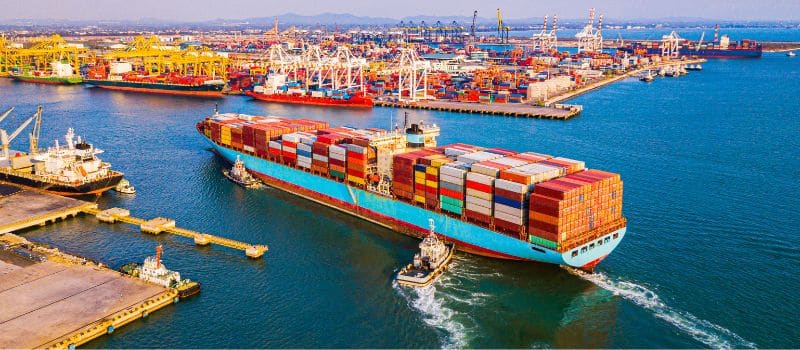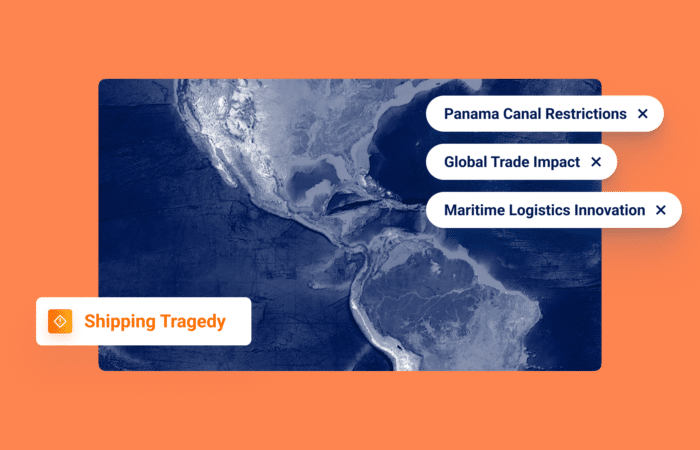What’s inside?
Detention and demurrage charges can significantly impact the efficiency and costs of international shipping operations. Let’s explore effective strategies to prevent, validate, and dispute detention and demurrage charges. By employing these practices, businesses can cut costs and save valuable time, while ensuring accurate invoicing.
What is the Difference Between Demurrage and Detention?
Detention and demurrage charges are fees associated with the use of shipping containers beyond the agreed-upon free time allowed by carriers and terminals. These charges are incurred when the containers are held at the port, terminal, or other designated locations for longer than the allotted time.
Detention charges are applied when containers are retained by the consignee, importer, or other parties beyond the specified free time provided for loading or unloading cargo. The purpose of detention charges is to encourage prompt cargo retrieval and efficient use of containers. These charges are typically levied on a daily or hourly basis, after the free time expires.
Demurrage charges are imposed when containers are held at the port or terminal for a period longer than the allotted free time for cargo pickup or return. Demurrage charges are usually associated with the time spent at the port before the container is loaded onto a vessel (import demurrage), or after the container is discharged from the vessel and awaiting pickup (export demurrage). Similar to detention charges, demurrage charges are calculated on a daily, or hourly basis.
Who Pays Detention and Demurrage?
Demurrage charges: typically, the party responsible for the delay in returning the container is the one who pays demurrage. For example, if a consignee holds onto a container for longer than the agreed-upon free time, they would be responsible for paying demurrage charges.
Detention charges: the party responsible for keeping the container beyond the free time for loading/unloading is generally the one who pays detention charges. This could be the shipper, consignee, or any other party involved in the logistics chain.
How Much is Demurrage Per Day?
Demurrage charges vary as they are determined by the carrier, the terminal, and the contract.
The charges may cost between $75 and $300 per container per day. But, after a few days, the charges can become more significant. For example, if a shipment of 10 containers is left for just five extra days, the total fee would amount to $3,750.
How Much is Detention Per Day?
Detention costs can vary widely depending on the location, the port, the shipping line, and the specific circumstances of the delay. Daily detention fees for cargo containers or vessels can range from a few hundred dollars, to several thousand dollars per day. For accurate and specific information, it’s crucial to consult the terms outlined in your shipping contract, or contact the relevant shipping or logistics company handling the cargo.
Strategies to Avoid Demurrage Charges
Avoiding demurrage charges in shipping necessitates a proactive approach and meticulous planning. It begins with ensuring accurate and clear communication of documentation, including bills of lading and shipping instructions, to all involved parties.
Optimizing cargo handling processes; and coordinating among shippers, carriers, and consignees helps expedite cargo movement, minimizing delays at loading and unloading points. Adhering strictly to scheduled pickup and delivery times is crucial, ensuring prompt cargo collection upon arrival and timely delivery, to prevent demurrage charges due to container return delays.
Efficiently utilizing the allotted free time at ports and monitoring cargo movements in real-time aid in identifying potential delays early, enabling proactive measures to prevent demurrage situations. Negotiating favorable terms regarding free time and demurrage charges during contract discussions, and maintaining operational flexibility with contingency plans, further mitigate the risk of additional charges.
Integrating technological solutions, such as a Maritime AI™ platform, for logistics management enhances visibility and streamlines operations, contributing to smoother stakeholder coordination throughout the shipping process.

Avoid Detention Charges
Avoiding detention charges requires careful planning and execution. Here are a few tips:
- Clear communication is key, ensuring all parties involved –, including shippers, receivers, and carriers –, are aware of schedules, deadlines, and operational requirements
- Have all the necessary paperwork ready to avoid delays at customs or during inspections
- Optimize loading and unloading processes to minimize time at ports. Properly coordinate with port authorities and terminals to expedite these operations
- Anticipate potential delays by monitoring weather conditions, port congestion, or any geopolitical issues that might impact your route
The Importance of Invoices
Invoices play a crucial role in the context of detention and demurrage charges within the shipping industry. Invoices affect how these charges are calculated, communicated, and settled:
Documentation of charges: invoices detail the services rendered, including the free time allotted for containers at the port. Any delays beyond this free time incur detention (for delays in returning containers to the terminal) or demurrage (for delays in retrieving containers from the terminal) charges. These charges are calculated based on the terms agreed upon in the contract and are reflected in the invoice.
Communication of charges: invoices serve as a formal communication tool between shipping entities (carriers, freight forwarders, consignees, etc.) detailing the detention and demurrage charges accrued due to delays. Clear and accurate invoicing helps in understanding the reasons behind the charges and facilitates prompt settlement.
Settlement and dispute resolution: invoices prompt the settlement of detention and demurrage charges. They provide a breakdown of charges incurred, enabling stakeholders to verify the accuracy of fees levied. In case of disputes or discrepancies, invoices serve as essential documents for initiating discussions and resolving issues between parties.
Financial impact and planning: invoices detailing detention and demurrage charges impact financial planning for shipping companies, importers, and exporters. They highlight additional costs incurred due to delays, prompting stakeholders to better strategize to avoid such charges in future shipments.
Don’t Just Pay Detention and Demurrage Charges – Validate Them First
When receiving an invoice with detention or demurrage charges, organizations without effective visibility solutions must scrutinize the fees thoroughly. Late fees can be inaccurately applied, leading to unnecessary expenses. It is necessary to review the invoice meticulously, verifying the dates and duration of detention or demurrage.
With a Maritime AI™ solution, you can cross-reference the charges with the actual time your containers were in possession to validate the fees accurately. Accuracy in documenting Actual Time of Arrival (ATA) and Actual Time of Departure (ATD) is crucial – this ensures that these timestamps are correctly recorded to establish the exact duration of container storage at ports or terminals.
By having precise ATA and ATD information, you can dispute unjustified detention or demurrage charges. When the container is in transit, you can predict delays at least 10 days in advance, providing plenty of time to mitigate potential issues.
The Importance of Shipment Visibility
As mentioned in a previous Windward blog post, achieving complete visibility in container tracking and logistics operations poses a significant challenge for many shippers and freight forwarders. The absence of crucial milestones, such as the ATA and the ATD, adds complexity to the process. Most carriers do not consistently provide updates for all ocean freight shipments, leaving shippers and freight forwarders in a state of uncertainty, unsure whether they will receive milestone updates.
Carrier updates often suffer delays ranging from hours to days, creating numerous blindspots and uncertainties throughout the shipment process. These large latency gaps, representing the time between the occurrence of a milestone and its update, can result in substantial costs. For instance, if a container arrives at a port on Monday, but the update is received only on Wednesday,this obviously leads to a two-day delay, potentially resulting in detention and demurrage charges.
Exception Management – a Preventative Measure
Preventing detention and demurrage charges begins with effective exception management. By utilizing advanced container tracking and monitoring systems, you can identify containers that are likely to be delayed well in advance. This knowledge allows you to take proactive action, such as rescheduling or rerouting shipments, to avoid unnecessary charges.
A few other benefits of exception management, explained in one of our blog posts, include:
- Cost reduction: swiftly identifying and addressing exceptions can help minimize contingency costs and avoid unnecessary expenses associated with delays and disruptions in the supply chain. By managing exceptions proactively, businesses can reduce demurrage fees, detention costs, and other penalties related to non-compliance, or inefficient operations.
- Improved customer experience: managing exceptions ensures that customers receive timely updates about any deviations in their shipments. This transparency builds trust and enhances customer satisfaction, as clients are kept informed and can plan accordingly for any potential delays or changes in arrival times.
- Greater control and visibility: real-time updates and comprehensive exception management facilitate enhanced visibility into supply chain operations. This greater control allows for informed decision-making and the ability to respond quickly to changing conditions.
- Data-driven insights: exception management with advanced analytics provides valuable data-driven insights into the supply chain’s performance and identifies patterns, or recurring issues that require attention. These insights enable continuous improvement and optimization of shipping operations.
Maritime AI™ Can Help
Windward Ocean Freight Visibility makes it easy to validate invoices, as it allows you to go back and double-check any information. Even if you get invoiced two months after your shipment arrives, that event stays in the system for as long as needed. By this late stage, the information may no longer be available from carriers or port, and terminal websites, leaving many shippers and freight forwarders in a position of just paying because they have no way of checking.
Navigating the complexities of detention and demurrage charges requires careful attention, proactive measures, and a reliable solution. By implementing effective strategies for preventing, validating, and disputing these charges, you can mitigate unnecessary costs and streamline your shipping operations. Leveraging advanced technology empowers companies to validate invoices, maintain shipment visibility, identify delays, and customize exception management.














